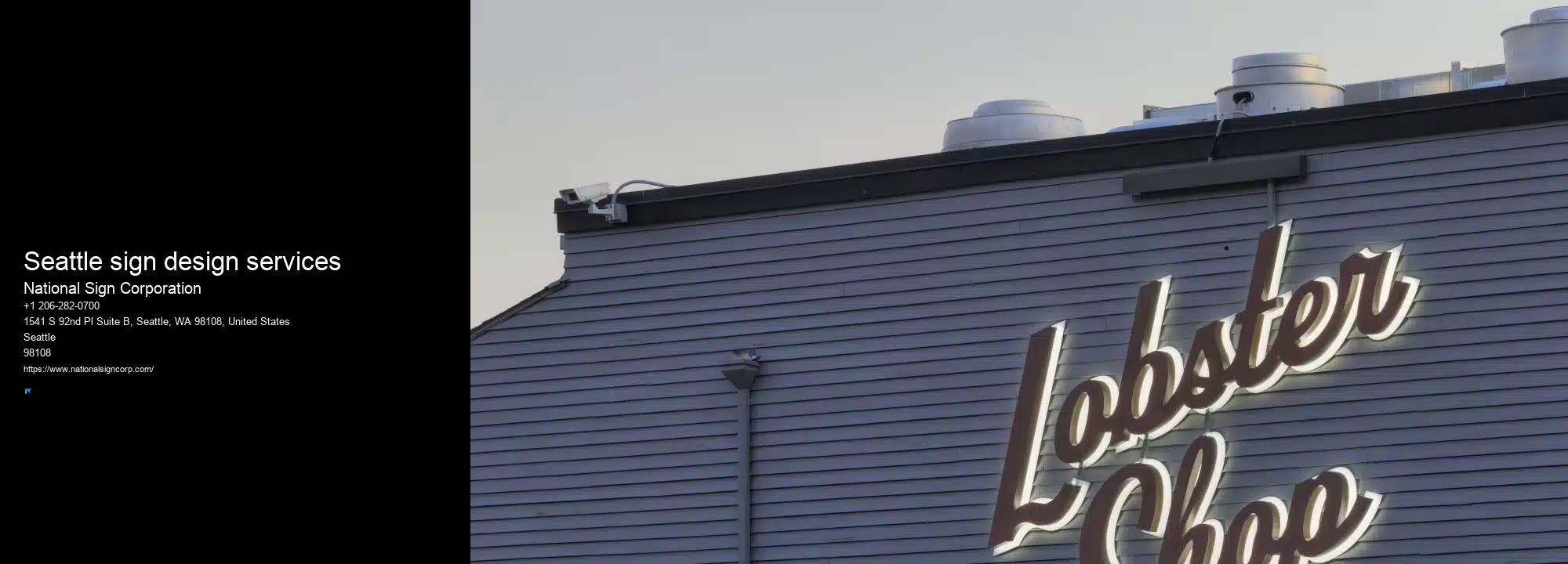

This precision technology allows for intricate designs and shapes, ensuring your brand's logo or message is depicted with unmatched clarity and detail. If you're curious about how this trusted Seattle sign design services sign company can transform your business's facade into a beacon for potential customers, there's much more to uncover about why they're the preferred choice for many. They're also harnessing the power of solar panels in signage, making your brand not only visually stunning but eco-friendly too. Learn more about National Sign Corporation here. Whether it's integrating with existing systems or setting up a new network for your sign, they'll make sure everything is up and running smoothly. We're also focusing on sustainability, planning to use eco-friendly materials and energy-efficient designs to minimize our environmental footprint. Learn more about Seattle sign design services here
Imagine your sign illuminated by eco-friendly LED lights, or crafted from reclaimed wood for a rustic, yet modern appeal. If you're wondering how custom sign solutions can transform a business's public face and what makes the National Sign Corporation a key player in this field, there's plenty to explore. And in a city as vibrant as Seattle sign design services, that's exactly what you need to keep your brand one step ahead. That's why it's essential to choose materials and designs that reflect the strength and resilience of your business.
They understand the importance of first impressions and ensure your electronic messaging sign makes the right one every time. We also offer a recycling program for old signs, ensuring they don't end up in landfills. These aren't your everyday signs; they're tailor-made to reflect your brand's unique identity and ethos. Event Directional Signs These aren't your run-of-the-mill signs.
It's a statement of confidence in your business and an invitation to potential customers to learn more about what you offer. 3D Lettering You'll need ongoing support for maintenance, updates, and perhaps even future expansions. The company harnesses sophisticated software that allows for real-time message updates. Using the latest technology and materials, your sign is crafted to not just meet, but exceed your expectations.
This adaptability is perfect for promotions, special events, or simply keeping your signage fresh and engaging. Instead, you invest once in quality craftsmanship that stands the test of time, making it a more cost-effective solution in the long run. These concepts aren't just drafts; they're a visual conversation, meant to refine and adjust until they perfectly align with your vision.
Seattle is situated on an isthmus between Puget Sound, an inlet of the Pacific Ocean, and Lake Washington. It is the northernmost major city in the United States, located about 100 miles (160 km) south of the Canadian border. A gateway for trade with East Asia, the Port of Seattle is the fourth-largest port in North America in terms of container handling as of 2021.
Almost overnight, the café saw a 40% increase in customers. Lastly, consider ADA-compliant signs to ensure your space is welcoming and accessible to all. Each project in our portfolio stands as a testament to our team's dedication to quality, creativity, and the unique needs of our clients. After finalizing your custom design, it's time to explore the variety of interior signage options that National Sign Corporation offers to complement your brand's space.
This attention to detail often translates into increased foot traffic.
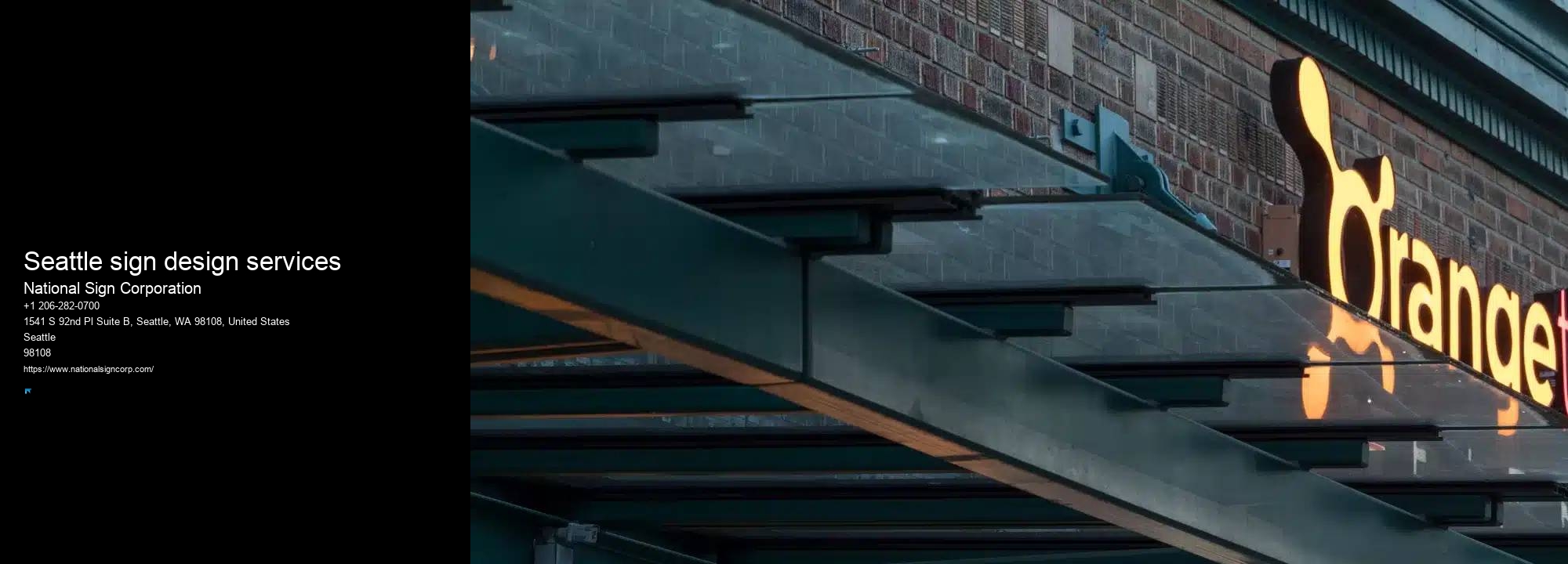
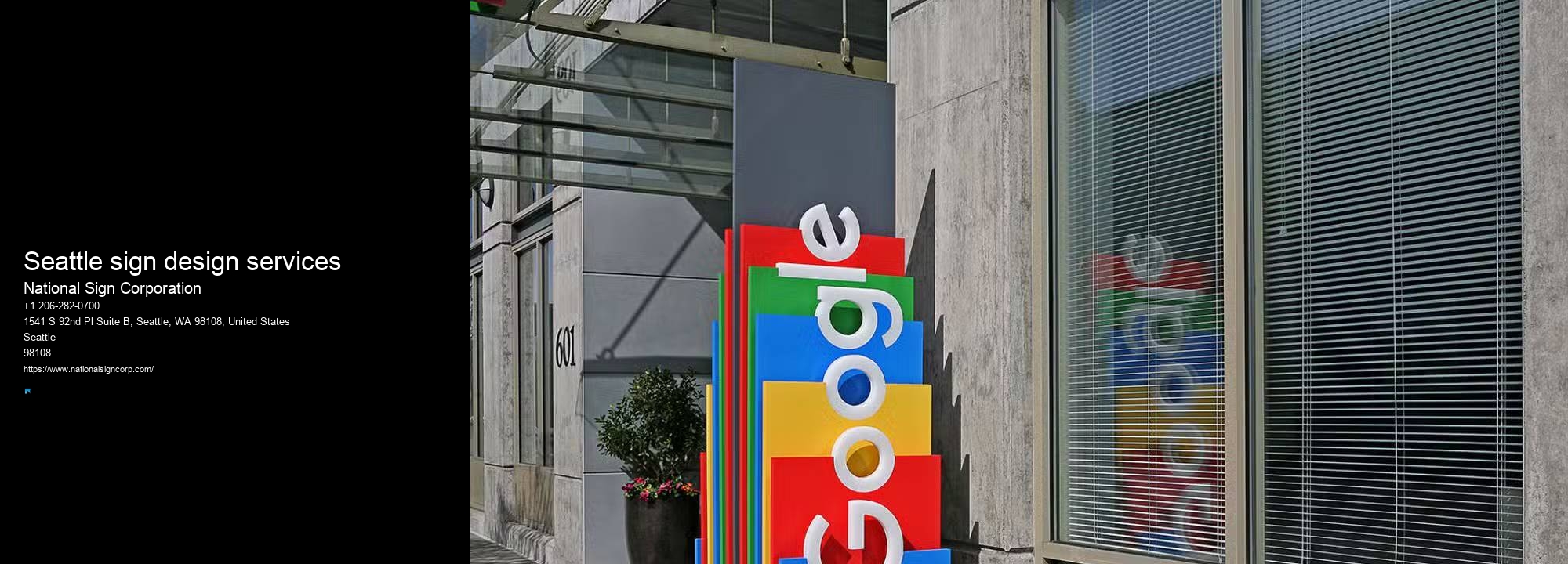
Whether you're looking for a sleek, modern design or something more traditional, there's a pylon sign that'll fit your brand's aesthetic. Whether you're aiming for a sleek, modern design or a classic, stately appearance, there's a monument sign that fits your vision perfectly. Prefer typing to talking? This isn't by chance; it's by design.
During this initial meeting, we'll dive into what you envision for your sign. From the initial design to the final installation, they're with you every step of the way, ensuring the process is seamless and stress-free. National Sign Corporation uses top-grade materials, ensuring that your signage retains its vibrant colors and structural integrity over the years.
Our team of skilled technicians is equipped with the right tools and expertise to ensure your sign is installed safely and correctly, no matter its size or complexity. Here's what you can expect. Whether it's a neon sign that needs a bulb replacement or a pylon sign requiring structural assessment, we've got you covered. Local businesses have transformed their visibility and brand image, thanks to our customized sign solutions.
Don't overlook the practical yet stylish directory signs, essential for guiding visitors through your building. From illuminated signs that light up your brand at night to digital signage that keeps your content fresh, our technology-driven solutions are designed to maximize visibility and impact.
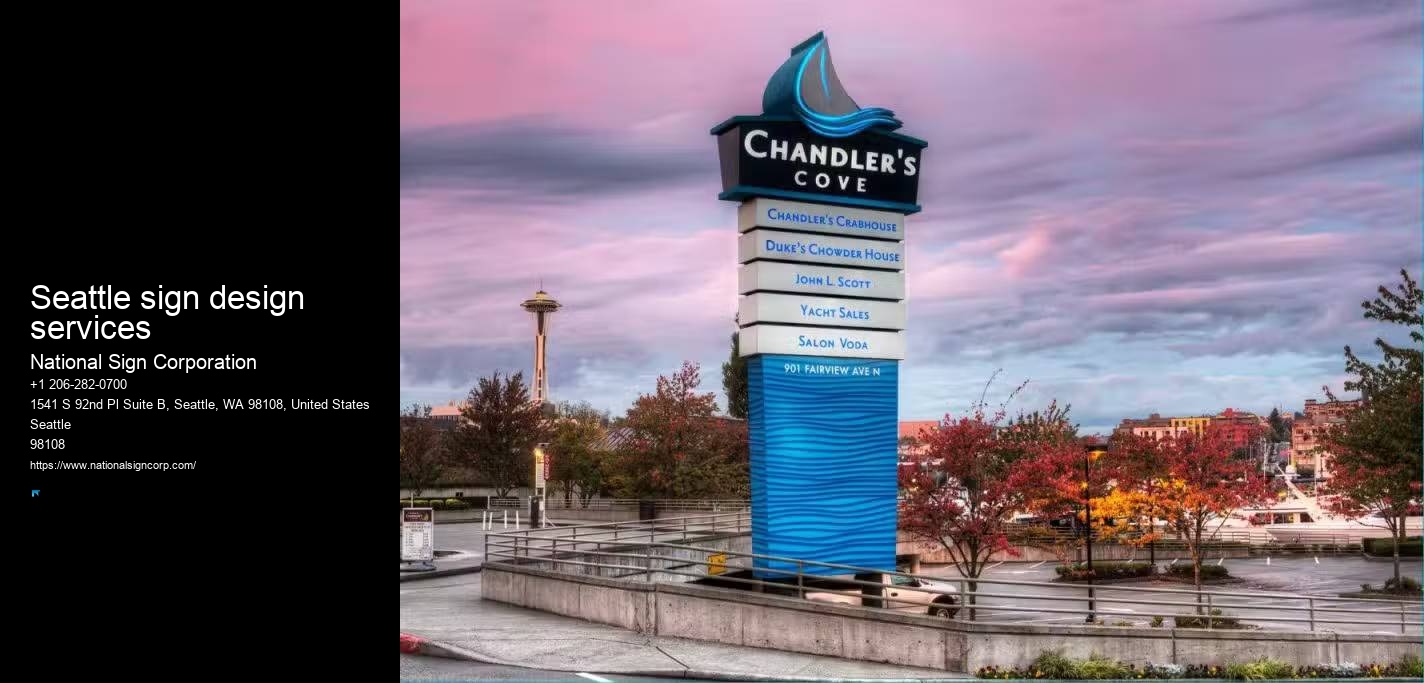
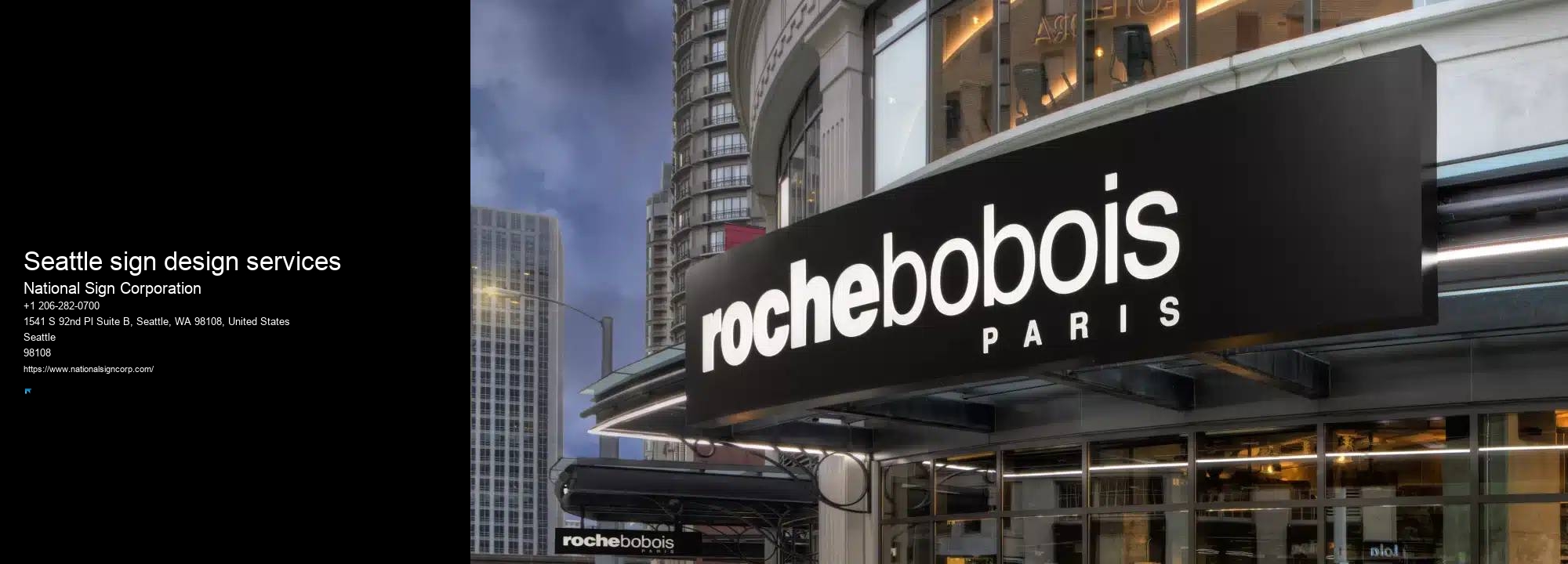
Moreover, they're adopting materials and processes that are more sustainable. This approach shows you can still grab attention with vibrant, dynamic signs without compromising on environmental values. Whether you're aiming for a subtle glow or a vibrant display, they've got the expertise to bring your vision to life.
Don't worry if it sounds complicated; that's where National Sign Corporation steps in. You'll find everything from vibrant, eye-catching LED signs that grab your attention day or night, to elegant, meticulously crafted monument signs that enhance a brand's presence. That's the power of LED and RGB lighting in action.
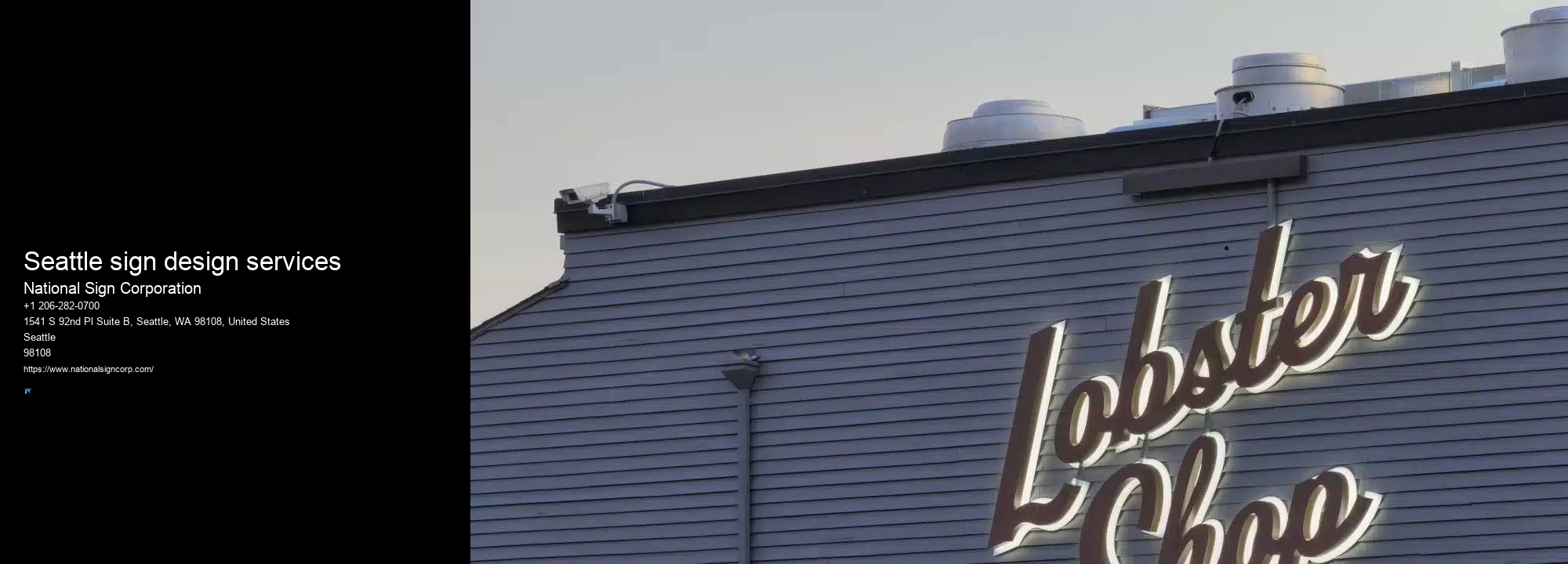



A sign is an object, quality, event, or entity whose presence or occurrence indicates the probable presence or occurrence of something else.[1] A natural sign bears a causal relation to its object—for instance, thunder is a sign of storm, or medical symptoms a sign of disease. A conventional sign signifies by agreement, as a full stop signifies the end of a sentence; similarly the words and expressions of a language, as well as bodily gestures, can be regarded as signs, expressing particular meanings. The physical objects most commonly referred to as signs (notices, road signs, etc., collectively known as signage) generally inform or instruct using written text, symbols, pictures or a combination of these.
The philosophical study of signs and symbols is called semiotics; this includes the study of semiosis, which is the way in which signs (in the semiotic sense) operate.
Semiotics, epistemology, logic, and philosophy of language are concerned about the nature of signs, what they are and how they signify.[2] The nature of signs and symbols and significations, their definition, elements, and types, is mainly established by Aristotle, Augustine, and Aquinas. According to these classic sources, significance is a relationship between two sorts of things: signs and the kinds of things they signify (intend, express or mean), where one term necessarily causes something else to come to the mind. Distinguishing natural signs and conventional signs, the traditional theory of signs (Augustine) sets the following threefold partition of things: all sorts of indications, evidences, symptoms, and physical signals, there are signs which are always signs (the entities of the mind as ideas and images, thoughts and feelings, constructs and intentions); and there are signs that have to get their signification (as linguistic entities and cultural symbols). So, while natural signs serve as the source of signification, the human mind is the agency through which signs signify naturally occurring things, such as objects, states, qualities, quantities, events, processes, or relationships. Human language and discourse, communication, philosophy, science, logic, mathematics, poetry, theology, and religion are only some of fields of human study and activity where grasping the nature of signs and symbols and patterns of signification may have a decisive value. Communication takes place without words but via the mind as a result of signs and symbols; They communicate/pass across/ messages to the human mind through their pictorial representation.


The word sign has a variety of meanings in English, including:
St. Augustine was the first man who synthesized the classical and Hellenistic theories of signs. For him a sign is a thing which is used to signify other things and to make them come to mind (De Doctrina Christiana (hereafter DDC) 1.2.2; 2.1.1). The most common signs are spoken and written words (DDC 1.2.2; 2.3.4-2.4.5). Although God cannot be fully expressible, Augustine gave emphasis to the possibility of God's communication with humans by signs in Scripture (DDC 1.6.6). Augustine endorsed and developed the classical and Hellenistic theories of signs. Among the mainstream in the theories of signs, i.e., that of Aristotle and that of Stoics, the former theory filtered into the works of Cicero (106-43 BC, De inventione rhetorica 1.30.47-48) and Quintilian (circa 35–100, Institutio Oratoria 5.9.9-10), which regarded the sign as an instrument of inference. In his commentary on Aristotle's De Interpretatione, Ammonius said, "according to the division of the philosopher Theophrastus, the relation of speech is twofold, first in regard to the audience, to which speech signifies something, and secondly in regard to the things about which the speaker intends to persuade the audience." If we match DDC with this division, the first part belongs to DDC Book IV and the second part to DDC Books I-III. Augustine, although influenced by these theories, advanced his own theological theory of signs, with whose help one can infer the mind of God from the events and words of Scripture.

Books II and III of DDC enumerate all kinds of signs and explain how to interpret them. Signs are divided into natural (naturalia) and conventional (data); the latter is divided into animal (bestiae) and human (homines); the latter is divided into non-words (cetera) and words (verba); the latter is divided into spoken words (voces) and written words (litterae); the latter is divided into unknown signs (signa ignota) and ambiguous signs (signa ambigua); both the former and the latter are divided respectively into particular signs (signa propria) and figurative signs (signa translata), among which the unknown figurative signs belong to the pagans. In addition to exegetical knowledge (Quintilian, Institutio Oratoria 1.4.1-3 and 1.8.1-21) which follows the order of reading (lectio), textual criticism (emendatio), explanation (enarratio), and judgment (iudicium), one needs to know the original language (Hebrew and Greek) and broad background information on Scripture (DDC 2.9.14-2.40.60).
Augustine's understanding of signs includes several hermeneutical presuppositions as important factors. First, the interpreter should proceed with humility, because only a humble person can grasp the truth of Scripture (DDC 2.41.62). Second, the interpreter must have a spirit of active inquiry and should not hesitate to learn and use pagan education for the purpose of leading to Christian learning, because all truth is God's truth (DDC 2.40.60-2.42.63). Third, the heart of interpreter should be founded, rooted, and built up in love which is the final goal of the entire Scriptures (DDC 2.42.63).
The sign does not function as its own goal, but its purpose lies in its role as a signification (res significans, DDC 3.9.13). God gave signs as a means to reveal himself; Christians need to exercise hermeneutical principles in order to understand that divine revelation. Even if the Scriptural text is obscure, it has meaningful benefits. For the obscure text prevents us from falling into pride, triggers our intelligence (DDC 2.6.7), tempers our faith in the history of revelation (DDC 3.8.12), and refines our mind to be suitable to the holy mysteries (DDC 4.8.22). When interpreting signs, the literal meaning should first be sought, and then the figurative meaning (DDC 3.10.14-3.23.33). Augustine suggests the hermeneutical principle that the obscure Scriptural verse is interpreted with the help of plain and simple verses, which formed the doctrine of "scriptura scripturae interpres" (Scripture is the Interpreter of Scripture) in the Reformation Era. Moreover, he introduces the seven rules of Tyconius the Donatist to interpret the obscure meaning of the Bible, which demonstrates his understanding that all truth belongs to God (DDC 3.3.42-3.37.56). In order to apply Augustine's hermeneutics of the sign appropriately in modern times, every division of theology must be involved and interdisciplinary approaches must be taken.[3]
As an architect, I rely on professionals like National Sign for my projects. They are very knowledgeable, they help advise me on the very complicated codes for signage, and they are capable of integrating so many different materials: wood, metal, glass, etc... Their shop is like a workman's fantasy camp!
We've worked with National on several large-scale signage projects and they're excellent. The team is creative, responsive, and the final product is beautiful. I highly recommend them.
I began doing business with National Sign back in 1989 with a relatively minor project. Their diligence and attention to detail ensured the project's success. 29 years later the two signs are still looking great and seeing them reminds me why I have chosen National to be my sole branding partner.
National Sign Corporation ensures your sign stays in top condition by offering comprehensive maintenance and repair services after installation. You won't have to worry about wear and tear affecting your sign's appearance or functionality.
Yes, you're in luck! National Sign Corporation can indeed provide signage solutions for businesses located outside of Seattle, even in different states, ensuring your branding stands out, no matter where you're based.
You're looking at an average turnaround time from the first chat to installing your custom sign typically ranging between 4 to 6 weeks, depending on the project's complexity and specific requirements.